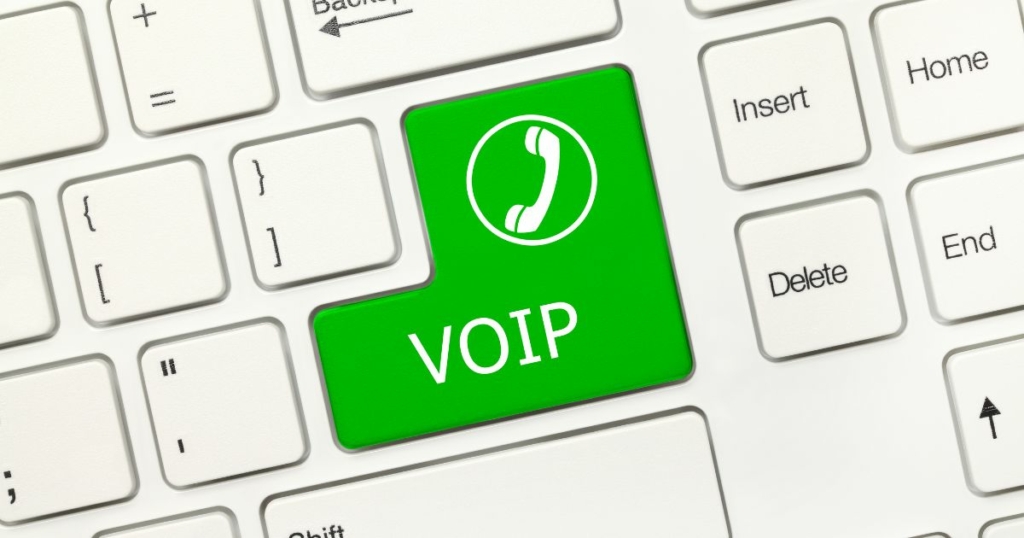Switching to a cloud phone system introduces you to a new set of cloud terminology with often unfamiliar words and phrases. If you’re feeling overwhelmed, you’re not alone. To help you navigate this new landscape, we’ve put together an easy-to-understand glossary of cloud phone terminology.
Glossary of Cloud Phone Terminology
This guide will clarify common VoIP terminology and phrases, making your transition to a cloud phone system smoother and more informed.
A
Auto Attendant: An automated system that answers incoming calls and provides a menu of options for call routing. It’s also known as a virtual receptionist.
Anonymous Caller Rejection: A feature that allows you to automatically reject calls from parties who have explicitly restricted their identities (like robo-dialers).
Automatic Call Distribution (ACD): A system that distributes incoming calls to a specific group of terminals or agents based on pre-established criteria, often used in call centers.
B
Bandwidth: The capacity of a network to transmit data. Higher bandwidth allows better call quality and more simultaneous calls in VoIP systems.
Business Continuity: Strategies and solutions in VoIP systems that ensure business communication remains operational during and after a disaster or emergency.
Business Text Messaging: A feature of cloud phone systems that allows you to make and receive text messages from your business line while using a personal smartphone.

C
Call Analytics: Using data analysis tools and reports to evaluate and improve the efficiency and effectiveness of voice calls in a VoIP system.
Call Coaching: Features that allow you to monitor real-time calls to train and advise employees. Features include “listen in,” where you can anonymously listen to the call; “whisper,” where you can speak without the caller hearing you; and “join,” where you can join the call.
Call Continuity: Another word for failover, indicating the continuous availability of cloud phone services when the original connection is lost.
Call Forwarding: A feature that redirects incoming calls to another phone number. This is useful for businesses that need to route calls to different departments or individuals.
Call Logs: Reports of all incoming and outgoing calls in your cloud phone system that allow you to understand how many calls you receive and how they are handled.
Call Park: A feature allowing a call to be put on hold at one telephone and continued from another. It’s helpful in offices where mobility is essential.
Call Queue: A feature that holds callers in line so calls can be answered in the order they were received.
Call Recording: A feature that records voice calls for later review. It’s often used for training, quality assurance, or legal compliance.
Cloud Phone System: A phone service hosted and managed in the cloud rather than on physical hardware at your location. It offers flexibility and features like voicemail to email, call forwarding, and more, accessible over the Internet. Cloud phone, cloud-based phone, and VoIP are synonymous.

D
Desktop Connection: A feature of cloud phones that allows you to turn your computer into an office phone. Connected via an app, you can instantly send and receive calls from your desktop computer.
DID (Direct Inward Dialing): A feature allowing a company to allocate individual phone numbers to each employee without requiring a separate physical phone line.
E
E911 (Enhanced 911): A service that automatically provides emergency services with the caller’s location information, crucial for ensuring safety in emergencies.
Extension: A short internal number assigned to specific devices or employees in a VoIP or PBX system. It allows for easy internal calling within an organization.
F
Failover: An automatic switching to a redundant server or secondary internet connection upon the failure or abnormal termination of the previously active system. Failover helps ensure continuous access to cloud phone services in case of a problem, like losing power or the Internet going out.
Find Me/Follow Me: A call routing feature that allows incoming calls to be received at different locations on various devices according to predefined rules set by the user.
G
Greeting: In VoIP systems, a greeting is a pre-recorded message callers hear when they connect to your phone system. It’s often used to welcome callers and present a menu of options in an auto-attendant system.
H
HD Voice: High-definition voice technology in VoIP systems provides clearer, more natural-sounding audio than standard voice calls.
Hosted VoIP: A VoIP service where the hardware and PBX are hosted by a third-party provider off-site, reducing the need for physical infrastructure at your location.

I
Integration: A VoIP feature that allows your cloud phone system to be integrated (connected) with other vital technologies you use, such as your POS, CRM, ERP, or DMS systems.
Internet Telephony: The use of the Internet to make voice calls, as opposed to the traditional phone network. This is essentially what VoIP technology offers.
Interactive Voice Response (IVR): An automated telephony system that interacts with callers, gathers information, and routes calls to the appropriate recipients. It often includes a voice menu for callers to navigate.
J
Jitter: The variation in delay of received packets in a VoIP conversation, which can affect call quality. Minimizing jitter is crucial for clear voice transmission.
K
Kbps (Kilobits per Second): A unit of data transfer rate used to measure the speed of internet connections or data transmission (bandwidth). In the context of VoIP, a higher Kbps rate usually indicates better voice quality, as more data can be transmitted per second.
L
Latency: The delay between when a voice packet is transmitted and when it reaches its destination. Lower latency means better call quality in VoIP systems.
Local Number Portability (LNP): The ability to retain your existing phone numbers when switching from one phone service provider to another, including when moving to a cloud-based system.
M
Mobile VoIP: Using a mobile device to make voice calls over the Internet using VoIP technology, often through a specific app provided by the VoIP service.
Mobility: A primary reason why businesses switch to VoIP. A cloud phone system allows for greater mobility because employees can take and receive calls on their personal phones while using the business number.
Music/Messaging on Hold: A feature of cloud phone systems that allows you to play music or marketing messages while callers wait on hold.
N
Network Congestion: A situation where a network is overburdened with data, potentially leading to dropped calls or poor call quality in VoIP systems.
O
Off-Site Hosting: When a VoIP system operates on equipment located outside your office. Off-site hosting ensures you always have phone service, even during power or internet outages.
P
Private Branch Exchange (PBX): A private telephone network used within an organization. In cloud phone systems, a PBX can be hosted in the cloud, offering more features and flexibility than traditional PBX systems. This is known as a hosted PBX or virtual PBX.
Porting: The process of transferring a phone number from one service provider to another. In cloud telephony, this allows businesses to retain their existing phone numbers when switching to a cloud-based service.
Q
Quality of Service (QoS): A feature that prioritizes certain types of network traffic (like phone calls) to ensure high performance. Learn more about it in our short video here.
R
Redundancy: Implementing backup systems to ensure continued service and call quality in case the primary system fails.
Ring Group: A cloud phone feature that allows incoming calls to ring simultaneously on multiple phones. It’s useful for ensuring calls are answered promptly by the first available person in a team or department.
S
Smart Routing: Allows you to automatically and intelligently route calls to a live person wherever they are (to their office or mobile phone).
Softphone: A software application that allows users to make telephone calls over the Internet from a computer or mobile device without needing a physical phone.
T
Time-of-Day Routing: A feature in cloud phone systems that routes incoming calls to different numbers based on the time of day. This allows businesses to manage business and after-hours calls effectively.
U
Unified Communications: A system that integrates various communication methods within a business, such as voice calls, video conferencing, and instant messaging, into a single, unified system.
V
Video Conferencing: A cloud phone feature that allows two or more people to have an audio and visual connection, often used for office meetings.

Virtual Number: A telephone number without a directly associated phone line. These numbers are often used to route calls to different phones based on predefined rules.
Virtual Receptionist: Greets callers with a recorded message and routes them to where they need to go. Multiple greetings can be set up and scheduled according to time of day and day of the week.
Voicemail to Email: A feature that alerts you by email when you have a new voicemail. You can receive a playable v-mail file or simply an alert so you know when callers leave a message.
Voicemail to Text: A feature that sends an SMS message when voicemail messages are received.
Voicemail Transcription: Converting voicemail messages into text format, allowing users to read messages instead of listening to them.
W
Wi-Fi Calling: Making voice calls over a wireless internet connection instead of a traditional cellular network, often used in VoIP systems.
Understanding Cloud Terminology
Understanding cloud terminology will help you get the most out of your cloud phone system. We hope this glossary of cloud phone words and phrases helps demystify the jargon and makes your journey into cloud telephony more enjoyable.
If you’re considering upgrading to VoIP, Clarity is here for you! Our customer and technical support teams simplify switching to a cloud phone system and are there to help you every step of the way. Reach out today to speak to a member of our team!
If you want to learn more about cloud phone systems, we also recommend these helpful articles:



